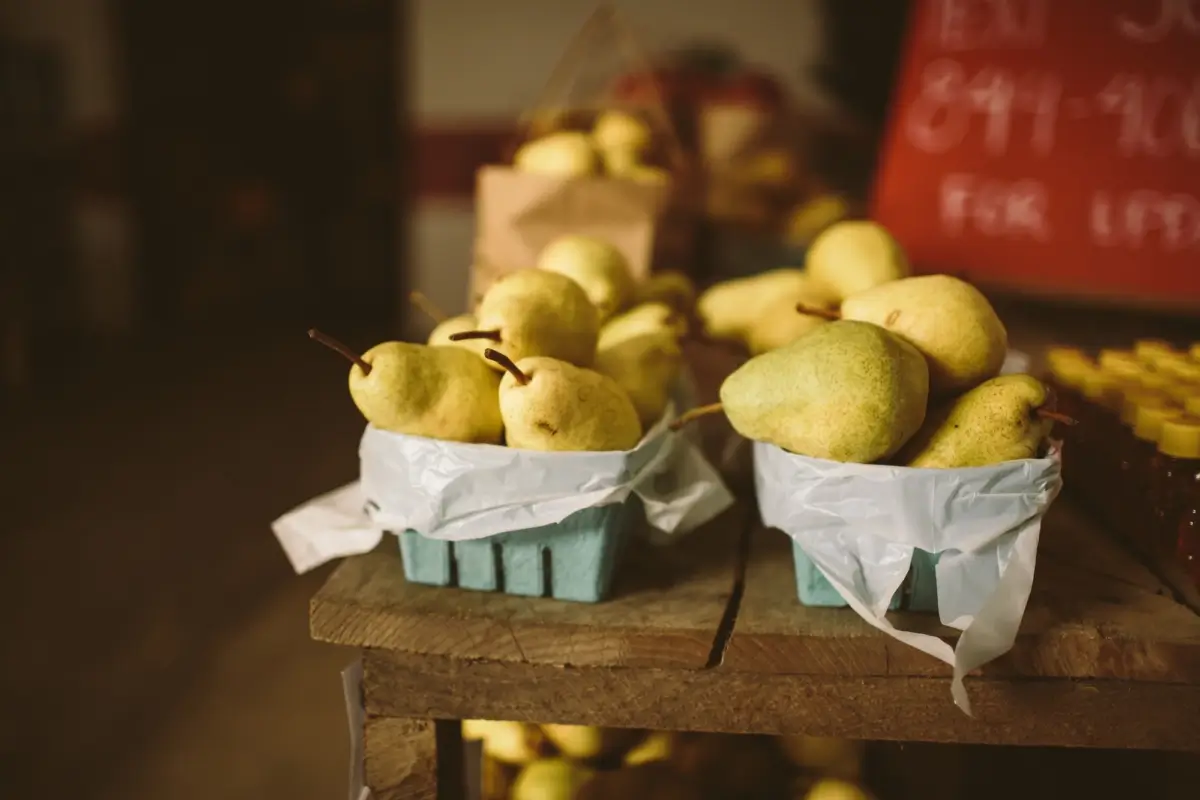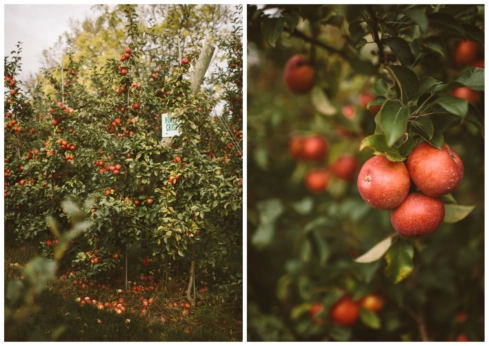Climate change threatens to upend fruit production. From mulching to thinking bigger, here’s how some farmers are adjusting to a riskier future.

“A lot of the Michigan growers have told us we probably couldn’t have picked a worse year to take over,” says John Behrens, owner of Farmhaus Farms and Farmhaus Cider Co. Coming off an exceptionally warm winter, it’s clear to Behrens that it’s a particularly challenging time to become a farmer. “We had a day that was over 70F, and the next day, the high I don’t think got out of the 20s,” he says. “That is not normal.”
Across the country, farmers growing apples and other tree fruits are intensifying their efforts to mitigate the challenges posed by increasingly erratic weather patterns driven by climate change, from spring frosts to drought. Tactics include frost fans, misting and mulching. Plus, in some cases, growers are planting new trees that they believe will help them to prepare for a more resilient farming future. With these strategies, farmers hope to keep their precious fruits from being destroyed by the elements, protecting their livelihoods—and the quality of the fresh and local produce that consumers can enjoy.
Behrens, who is also president of the Michigan Cider Association, has recently embarked on a new challenge: taking over a tree fruit farm close to his cidery in the Grand Rapids area. The farm—which had previously been with one family since 1907—grows apples, peaches, pears, plums and cherries. There is also a market and bakery onsite. Being a cidery and a grower has some advantages: The fruit has a clear path to production even when packing houses are overrun, and using hail-damaged fruits is easier.
But although residents of the snowy Mitten State might have enjoyed the warmer winter weather, farmers had other concerns. Behren’s orchard has been running about five weeks ahead of last year, in terms of the activity that the team has been seeing in the trees. For tree fruit farmers in the area, he says that late-season frost is the biggest single risk. “You increase your odds of that exponentially as you get into warmer winters and earlier springs.”
A cold wave with a frost and freeze after bud break can mean no crop. Tree fruit in Michigan, including the apple crop, was severely impacted by late frosts in 2012. And in both 2020 and 2021, tart cherry production was slashed by more than half. This instability, combined with low prices for crops due to imports from Turkey, means a risk of losing a strong farming tradition in the nation’s top cherry state.
Long before fruits reach stores and customers, protecting a crop from a late cold snap can be a knife edge. “A three-degree difference for an hour or two can be the difference between a 10-percent crop loss and a 90-percent crop loss,” he says. Many orchards use frost fans to mitigate the issues of cold weather that comes too late in the year. But, in some cases, the weather gets so cold it doesn’t matter whether the farm has frost fans or not. Although some apple varieties can withstand cooler temperatures, when frost hits trees that are well into bloom, deploying mitigating measures can be a waste of energy for farmers. In these extreme cases, “it’s a whole bunch of money down the drain for nothing,” says Behrens.

Farmhaus Farms grows apples, peaches, pears, plums and cherries. (Photo credit: Alyssa McElheny)
Across the country, in the Pacific Northwest, spring frosts also pose risks for growers. At Finnriver Farm and Cidery on Washington’s Olympic Peninsula, operations director Andrew Byers has been using misting as a strategy to keep pear trees cool in the spring. The team has set up overhead misters with a thermostat when it reaches 40F or so during the day in February. “By evaporative cooling, we can keep the pear trees wet, and that keeps them a little bit cooler,” says Byers. This can “trick” the trees to avoid early blooming. “We can slow the buds despite a warm spell early on.” Naturally, this is an easier method to use with plenty of access to water. “It would be a difficult proposition in the Central Valley of California,” says Byers.
Finnriver focuses on antique apple varieties from the UK, France and Spain, and he is working on breaking up the orchard’s monoculture. “When we feel vulnerable to the climactic changes that we’re seeing—like increased heat, less dormant period in the winter and erratic springs and erratic summers—the answer to me seems to be diversification,” says Byers. He explains that some of the diseases that live in soils and plant root tissue impact apples more so than other tree fruits.
The team is planting other kinds of trees, including fruits with which the cidery already ferments, such as plums and elderberries. “Pollinator resilience is also a pretty big issue in this idea of erratic climate,” says Byers. This is another benefit of diversity, as plums bloom earlier than apples, whereas elderberries bloom later.
Byers has also ramped up efforts with mulch and compost additions in the orchard since the 2021 heat dome. “We just watched the trees sizzle,” he says. Now, he’s putting wood chips at the base of the trees. “That is creating this fungal network, as the wood chips break down,” he explains. Like a giant sponge, this helps to improve water resilience in the root zone of the trees. It’s a tactic that avid home gardeners can also employ, to help with conserving moisture and moderating soil temperature.
The farm has previously operated with a dwarf orchard, but Byers says that he is now four years into an initiative to plant larger trees, as part of a goal to look at longer-term climate resilience strategies. In a dwarf orchard, trees can be planted more densely, and they produce on a faster timeline than larger trees, with the first harvest ready just four years after planting. But these small trees only have around 20 years of productivity. The new semi-standard trees will require more space and take between seven and 10 years until the first crop is ready. But the change may be worth it: The larger and taller trees will remain productive for up to 100 years, and crucially, these larger trees will provide additional shade and have better water retention.
After looking at climate modeling provided by the Jamestown S’Klallam tribe, Byers decided that preparing for hotter, drier summers in the future should be a priority at the orchard. The new trees with deeper root systems will be an important part of that. With these measures, he is hoping to play his part in ensuring that fruit production continues in the face of climate threats. “We are standing on the shoulders of centuries of apple growing and trying to figure out the best fit pathway for the conditions that we have now.”

